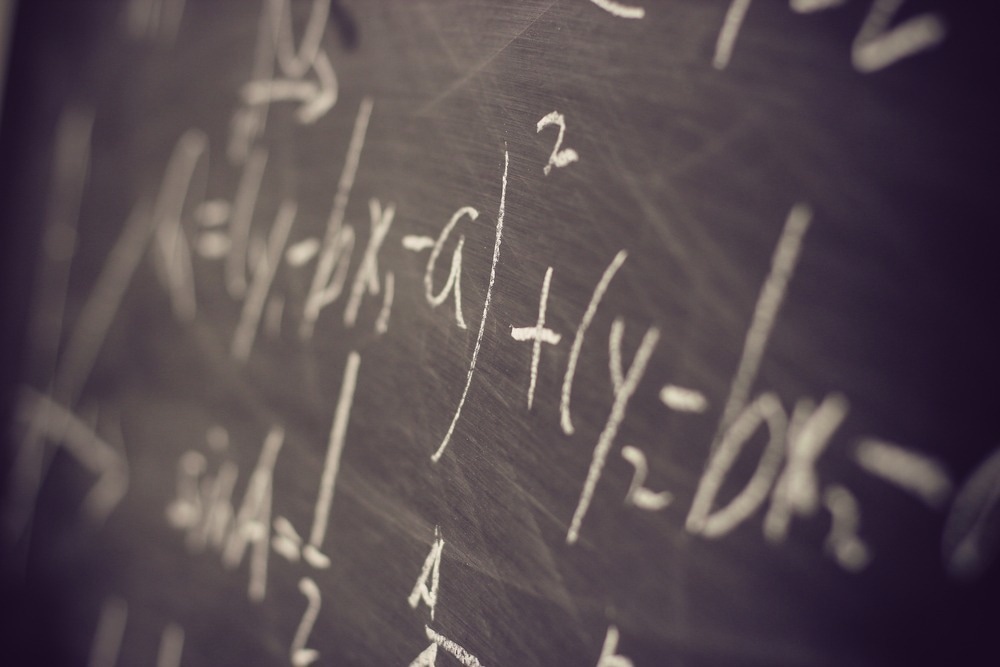Reviewed by Danielle Ellis, B.Sc.Aug 2 2023
An unexpected link between pure mathematics and genetics has been disclosed by an interdisciplinary group of mathematicians, physicists, engineers, and medical scientists. This helps disclose deep knowledge of the structure of neutral mutations and also the evolution of organisms.

Image Credit ChristianChan/Shutterstock.com
Number theory, known to be the study of the properties of positive integers, is probably the purest form of mathematics. At first glance, it might seem far too abstract to employ to the natural world. The influential American number theorist Leonard Dickson wrote “Thank God that number theory is unsullied by any application.”
Despite that number theory identifies sudden applications in science and engineering, from leaf angles that (almost) universally track the Fibonacci sequence, to modern encryption methods depending on factoring prime numbers. Currently, scientists have illustrated an unexpected link between evolutionary genetics and number theory.
Particularly, the research group (from Oxford, Harvard, Cambridge, MIT, GUST, Imperial, and the Alan Turing Institute) have found a deep connection between the sums-of-digits function from number theory and a main quantity in genetics, the phenotype mutational robustness.
This quality has been specified as the average probability that a point mutation does not alter a phenotype (a characteristic of an organism).
The breakthrough might have significant implications for evolutionary genetics. Several genetic mutations are neutral, implying that they could gradually accumulate over time without impacting the phenotype’s viability.
Such neutral mutations result in genome sequences altering at a steady rate over time. As this rate is known, researchers could compare the percentage difference in the sequence between two organisms and deduce when their new common ancestor lived.
However, the presence of such neutral mutations posed a significant question: what fraction of mutations to a sequence are neutral? This property, known as phenotype mutational robustness, specifies the average amount of mutations that could take place throughout all sequences without impacting the phenotype.
We have known for some time that many biological systems exhibit remarkably high phenotype robustness, without which evolution would not be possible. But we didn’t know what the absolute maximal robustness possible would be, or if there even was a maximum.”
Ard Louis, Study Lead Author and Professor, University of Oxford
It is accurately this question that the group has answered. They demonstrated that the utmost robustness is proportional to the logarithm of the fraction of all possible sequences that map to a phenotype.
This has a correction that has been provided by the sums of digits function sk(n), specified as the sum of the digits of a natural number n in base k. For instance, for n = 123 in base 10, the digit sum would be s10 (123) = 1 + 2 + 3 = 6.
One more surprise was that the utmost robustness also becomes related to the popular Tagaki function, a bizarre function that is continuous all over the place, but differentiable nowhere. Also, this fractal function is known as the blancmange curve, since it looks like the French dessert.
First author Dr Vaibhav Mohanty (Harvard Medical School) added, “What is most surprising is that we found clear evidence in the mapping from sequences to RNA secondary structures that nature in some cases achieves the exact maximum robustness bound. It’s as if biology knows about the fractal sums-of-digits function.”
The beauty of number theory lies not only in the abstract relationships it uncovers between integers, but also in the deep mathematical structures it illuminates in our natural world. We believe that many intriguing new links between number theory and genetics will be found in the future.”
Ard Louis, Study Lead Author and Professor, University of Oxford
Source:
Journal reference:
Mohanty, V., et al. (2023) Maximum mutational robustness in genotype–phenotype maps follows a self-similar blancmange-like curve. Journal of The Royal Society Interface. doi.org/10.1098/rsif.2023.0169.